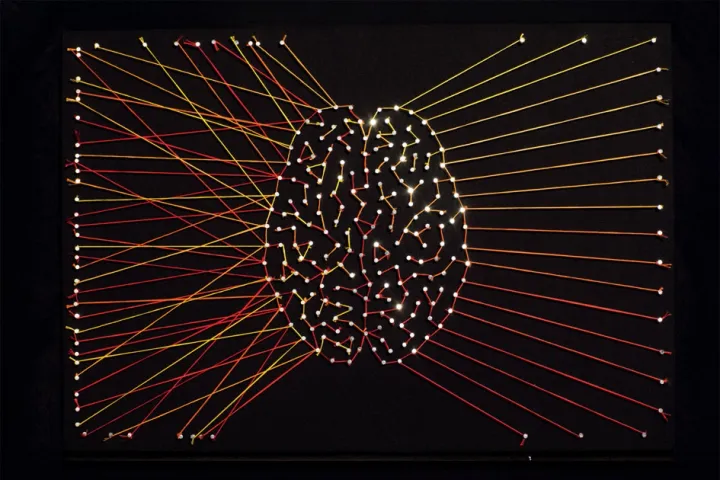
Photograph by Charles F. Stanley
It was in a college drawing class that I first heard the term “negative space,” and I still remember being confused by the concept. Too bad my art professor didn’t have Dr. Stanley’s photo of trees to illustrate what he meant. Then the lesson would instantly have made sense.
I had been drawing my whole life and always aimed for accurate representations; my method was to focus intently on the object and try to reproduce what I saw. Displeased with the inevitable distortions in my initial sketch, I’d then erase/adjust/erase/adjust until the image more closely approximated the real thing—or until I’d rubbed a hole in the paper.
But now the professor was introducing the importance of seeing what wasn’t there. In other words, he wanted me to notice the shape of spaces around whatever I was trying to draw. What a revolutionary idea, to perceive “nothing” as “something”—to see negative as positive—and to realize getting that shape’s contour right was essential to the accuracy of the entire picture. This was a new way of seeing.
And counterintuitive.
It felt like an attempt to live in an optical illusion, and I had trouble getting my mind to cooperate. Training the eye to observe “in reverse” seemed akin to ignoring the music and instead listening for rests.
My professor suggested thinking of the scene as a jigsaw puzzle, where each area of negative space is a single cut-out piece. Dr. Stanley’s photo would have been a perfect example, since its unusual composition has the effect of visually switching positive and negative space. The long vertical background shapes essentially become the main subject—and are easy to imagine as two finger-like puzzle pieces.
With practice, I got better at perceiving the actual contour of spaces, and my drawing skill improved. Over time, noticing the interplay of positives and negatives became more natural—and, interestingly, not just in relation to artwork. This new way of looking at things, I realized, also applied to other types of negatives. That is, our less-than-positive experiences.
The “negative spaces” of our life are an important part of the big picture. By providing balance, context, and definition, they often enhance the positives, which we then see with greater clarity and appreciation. I mean, how satisfying would the week be with seven workdays and no time off? Or a dinner of only dessert? Or physical health without an immune system strengthened by fighting viruses?
Of course, none of us welcome tough times. But looking back and assessing our periods of greatest growth, think about what we’d be like without the adversities that helped shape us so far. Where would we be without the mistakes we learn from, the faltering initial attempts we improve on, or the failures we determine never to repeat?
In all this, it’s essential to remember God knows how to redeem even the worst of situations for His followers. And we can trust Him to do so. He promises that whatever He allows in our life has purpose for our ultimate benefit (Rom. 8:28)—which is why He can say, “In everything give thanks” and even “Rejoice always” (1 Thess. 5:16; 1 Thess. 5:18).
That isn’t easy, but with the right perspective (another good art word), we will hopefully come to recognize our “negative spaces” as valuable and formative. In God’s greater scheme of things, in fact, they may not be negative after all.





